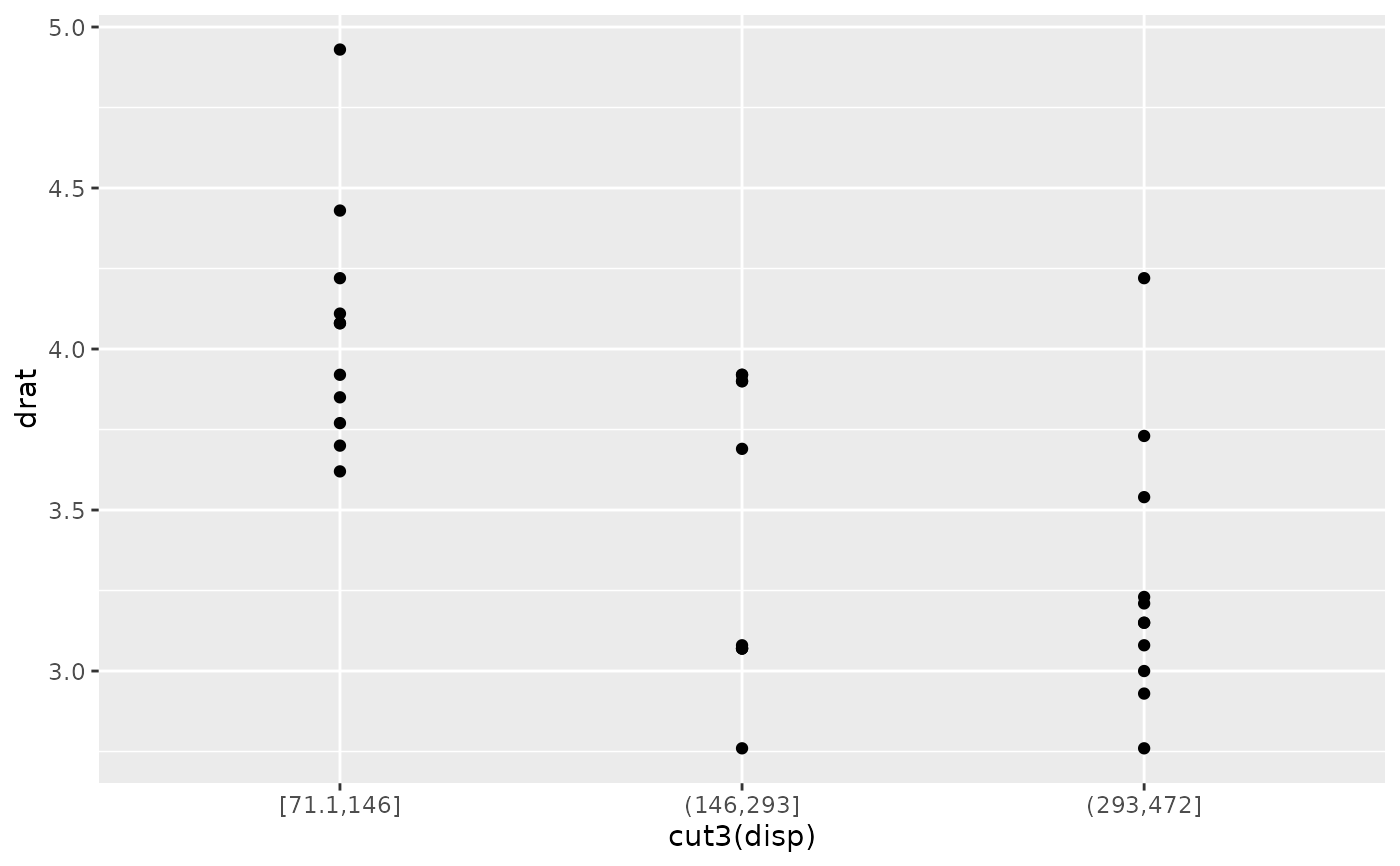Aesthetic mappings describe how variables in the data are mapped to visual
properties (aesthetics) of geoms. Aesthetic mappings can be set in
ggplot() and in individual layers.
Arguments
- x, y, ...
<
data-masking> List of name-value pairs in the formaesthetic = variabledescribing which variables in the layer data should be mapped to which aesthetics used by the paired geom/stat. The expressionvariableis evaluated within the layer data, so there is no need to refer to the original dataset (i.e., useggplot(df, aes(variable))instead ofggplot(df, aes(df$variable))). The names for x and y aesthetics are typically omitted because they are so common; all other aesthetics must be named.
Value
An S7 object representing a list with class mapping. Components of
the list are either quosures or constants.
Details
This function also standardises aesthetic names by converting color to colour
(also in substrings, e.g., point_color to point_colour) and translating old style
R names to ggplot names (e.g., pch to shape and cex to size).
Note
Using I() to create objects of class 'AsIs' causes scales to ignore the
variable and assumes the wrapped variable is direct input for the grid
package. Please be aware that variables are sometimes combined, like in
some stats or position adjustments, that may yield unexpected results with
'AsIs' variables.
Quasiquotation
aes() is a quoting function. This means that
its inputs are quoted to be evaluated in the context of the
data. This makes it easy to work with variables from the data frame
because you can name those directly. The flip side is that you have
to use quasiquotation to program with
aes(). See a tidy evaluation tutorial such as the dplyr programming vignette
to learn more about these techniques.
See also
vars() for another quoting function designed for
faceting specifications.
Run vignette("ggplot2-specs") to see an overview of other aesthetics
that can be modified.
Delayed evaluation for working with computed variables.
Other aesthetics documentation:
aes_colour_fill_alpha,
aes_group_order,
aes_linetype_size_shape,
aes_position
Examples
aes(x = mpg, y = wt)
#> Aesthetic mapping:
#> * `x` -> `mpg`
#> * `y` -> `wt`
aes(mpg, wt)
#> Aesthetic mapping:
#> * `x` -> `mpg`
#> * `y` -> `wt`
# You can also map aesthetics to functions of variables
aes(x = mpg ^ 2, y = wt / cyl)
#> Aesthetic mapping:
#> * `x` -> `mpg^2`
#> * `y` -> `wt/cyl`
# Or to constants
aes(x = 1, colour = "smooth")
#> Aesthetic mapping:
#> * `x` -> 1
#> * `colour` -> "smooth"
# Aesthetic names are automatically standardised
aes(col = x)
#> Aesthetic mapping:
#> * `colour` -> `x`
aes(fg = x)
#> Aesthetic mapping:
#> * `colour` -> `x`
aes(color = x)
#> Aesthetic mapping:
#> * `colour` -> `x`
aes(colour = x)
#> Aesthetic mapping:
#> * `colour` -> `x`
# aes() is passed to either ggplot() or specific layer. Aesthetics supplied
# to ggplot() are used as defaults for every layer.
ggplot(mpg, aes(displ, hwy)) + geom_point()
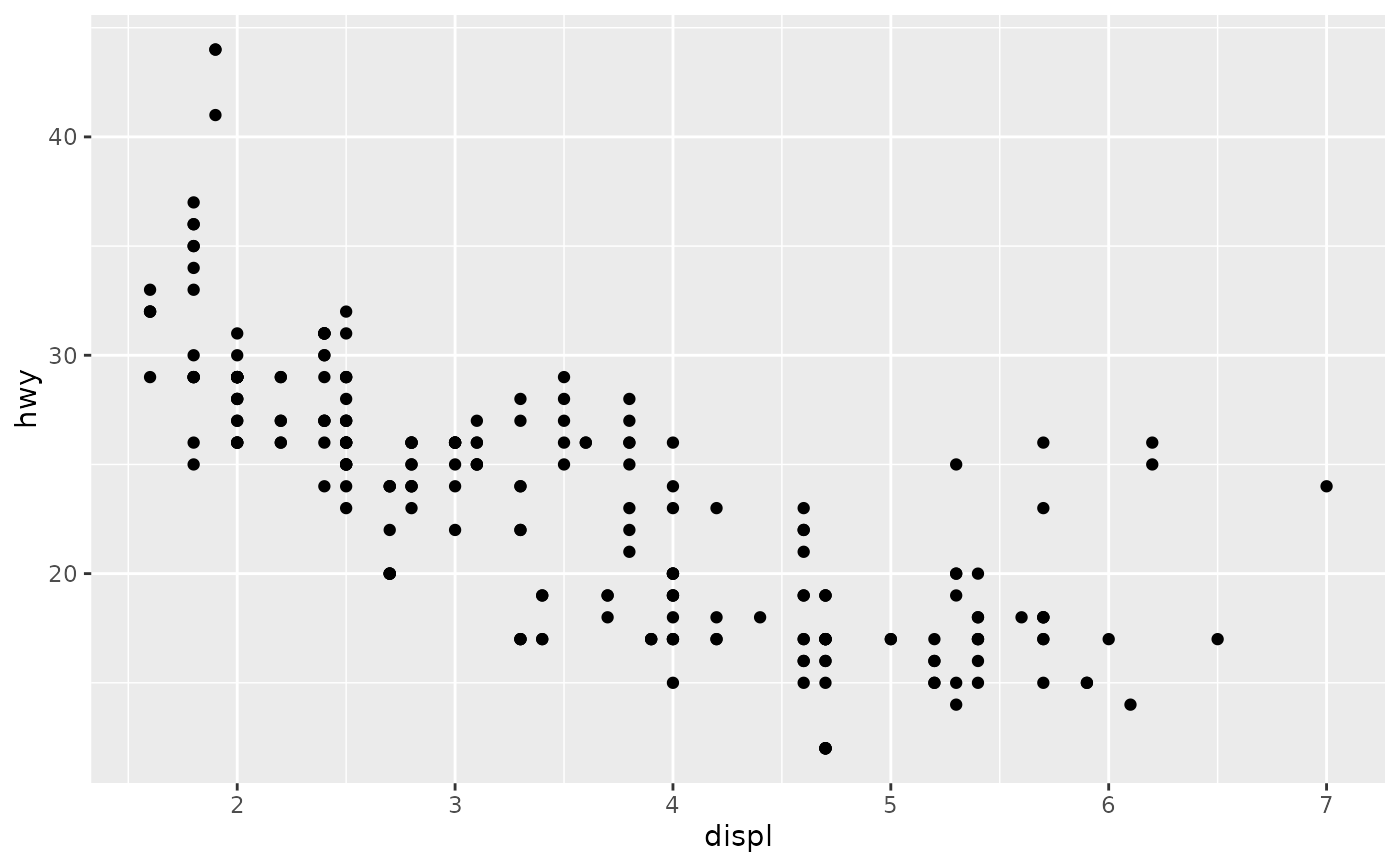 ggplot(mpg) + geom_point(aes(displ, hwy))
ggplot(mpg) + geom_point(aes(displ, hwy))
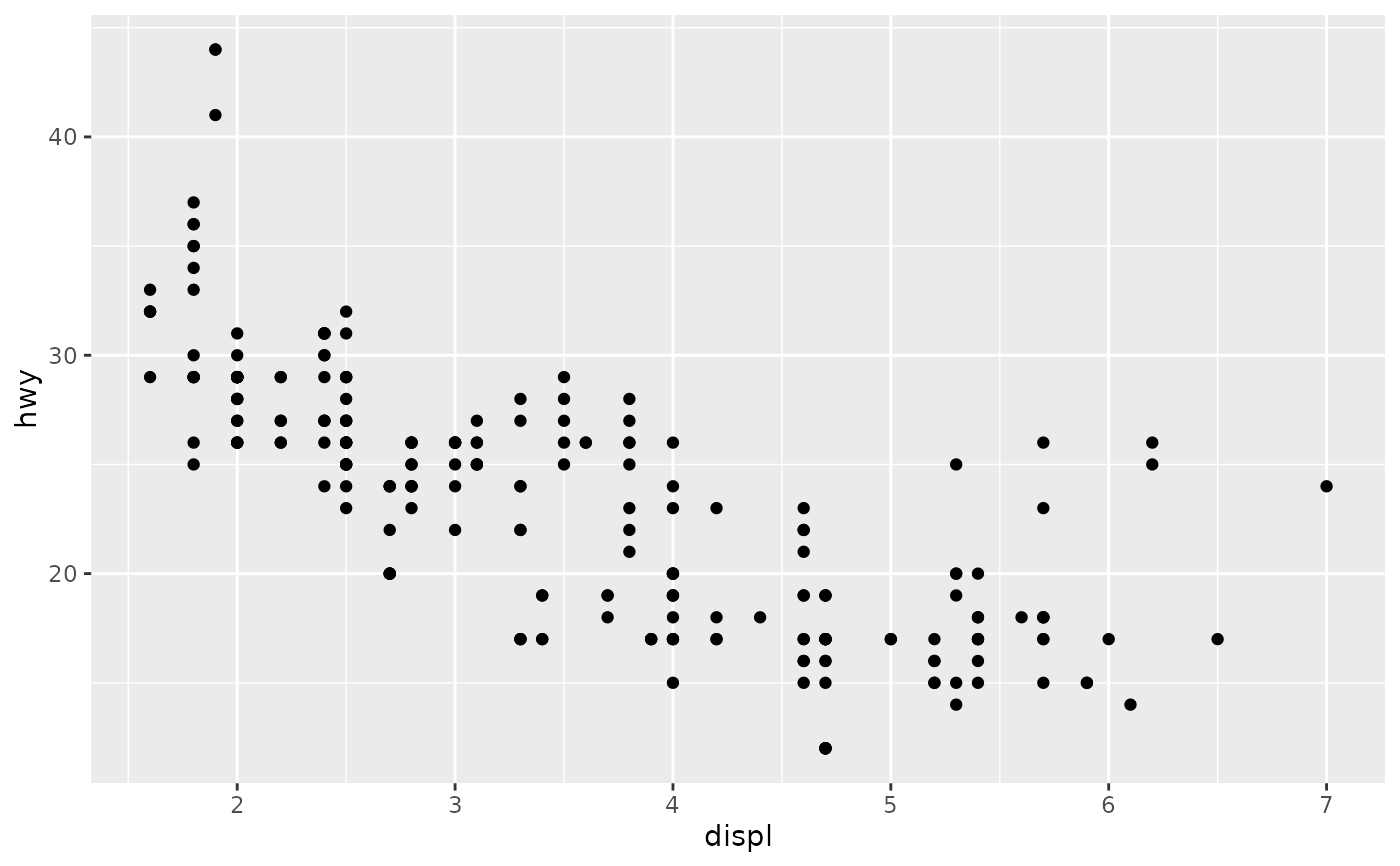 # Tidy evaluation ----------------------------------------------------
# aes() automatically quotes all its arguments, so you need to use tidy
# evaluation to create wrappers around ggplot2 pipelines. The
# simplest case occurs when your wrapper takes dots:
scatter_by <- function(data, ...) {
ggplot(data) + geom_point(aes(...))
}
scatter_by(mtcars, disp, drat)
# Tidy evaluation ----------------------------------------------------
# aes() automatically quotes all its arguments, so you need to use tidy
# evaluation to create wrappers around ggplot2 pipelines. The
# simplest case occurs when your wrapper takes dots:
scatter_by <- function(data, ...) {
ggplot(data) + geom_point(aes(...))
}
scatter_by(mtcars, disp, drat)
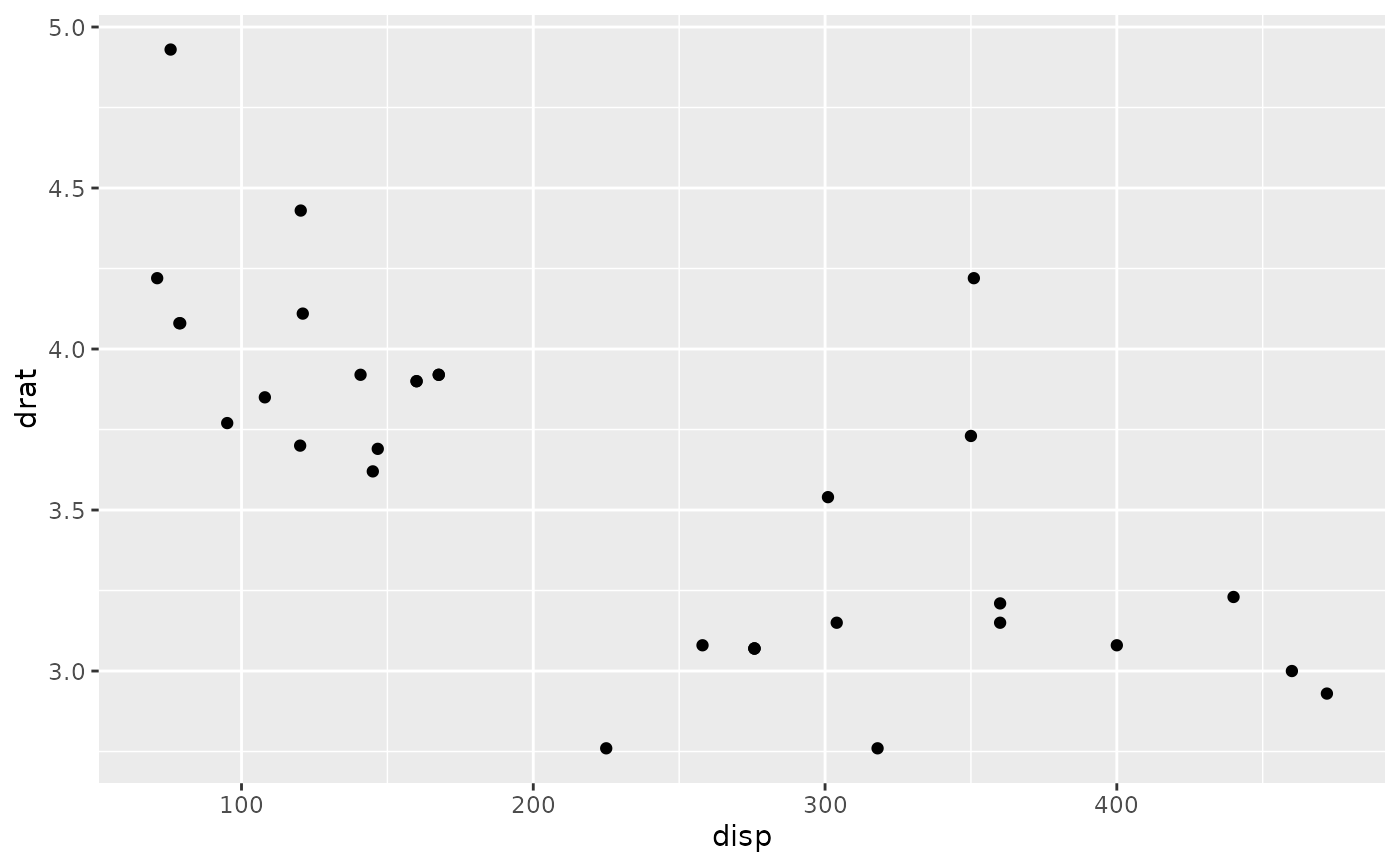 # If your wrapper has a more specific interface with named arguments,
# you need the "embrace operator":
scatter_by <- function(data, x, y) {
ggplot(data) + geom_point(aes({{ x }}, {{ y }}))
}
scatter_by(mtcars, disp, drat)
# If your wrapper has a more specific interface with named arguments,
# you need the "embrace operator":
scatter_by <- function(data, x, y) {
ggplot(data) + geom_point(aes({{ x }}, {{ y }}))
}
scatter_by(mtcars, disp, drat)
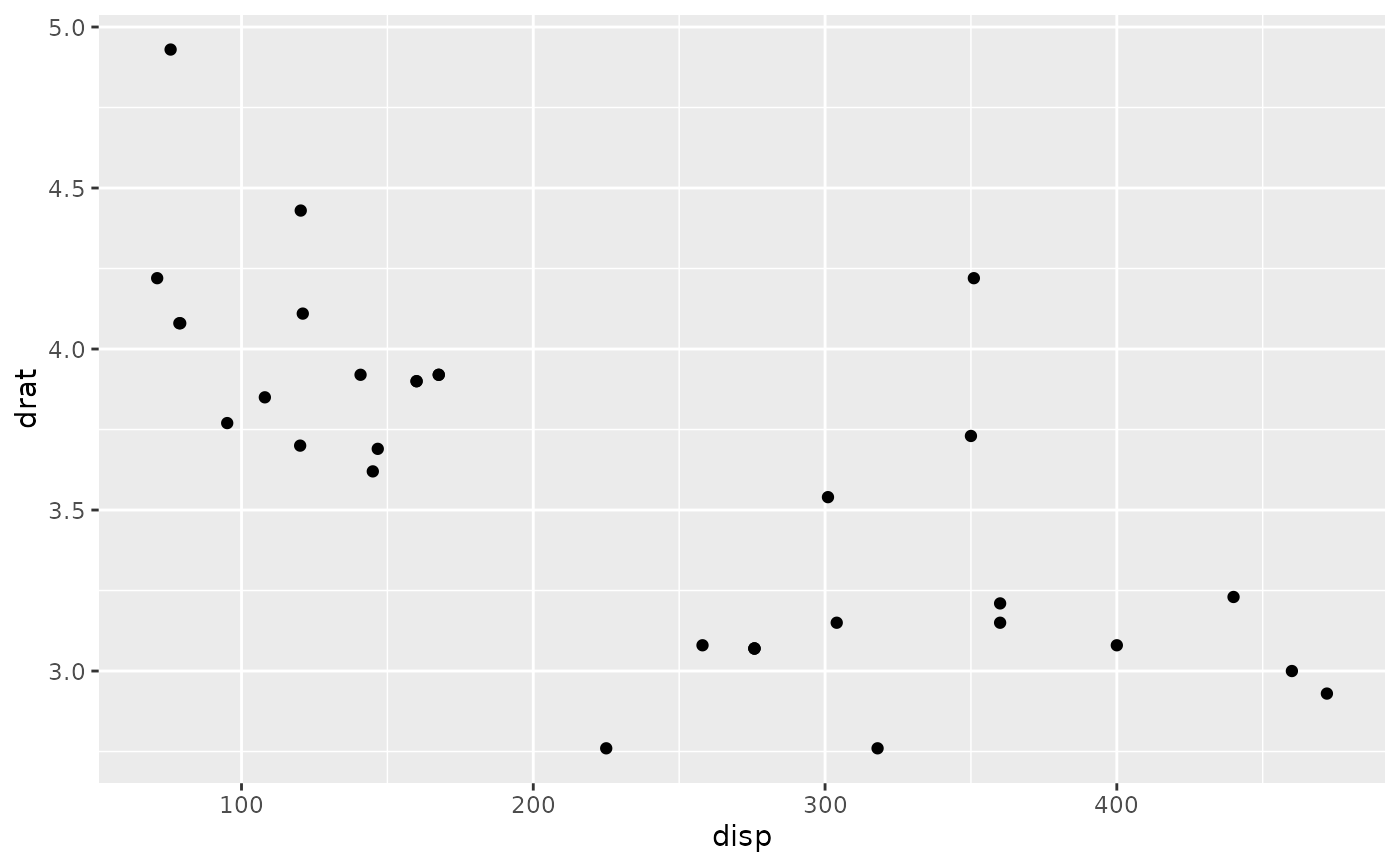 # Note that users of your wrapper can use their own functions in the
# quoted expressions and all will resolve as it should!
cut3 <- function(x) cut_number(x, 3)
scatter_by(mtcars, cut3(disp), drat)
# Note that users of your wrapper can use their own functions in the
# quoted expressions and all will resolve as it should!
cut3 <- function(x) cut_number(x, 3)
scatter_by(mtcars, cut3(disp), drat)
